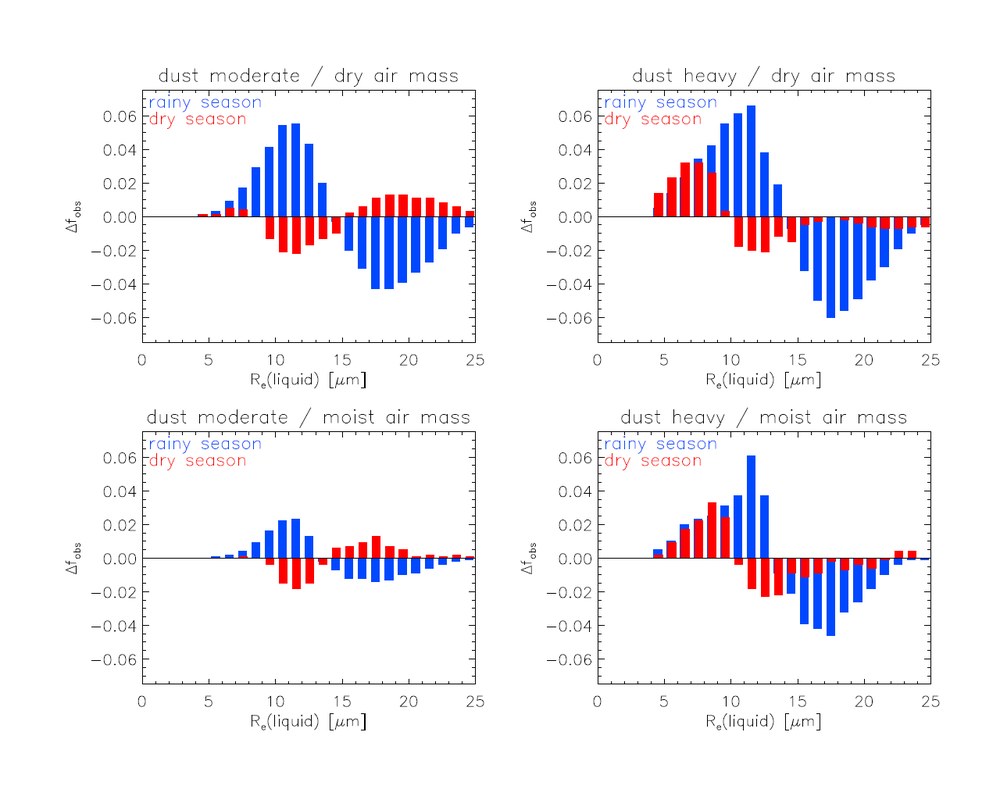Does desert dust change cloud properties in the West-African Monsoon region?

It is well known that aerosol-cloud-interactions are of great importance for the climate system. Scientists of the German Remote Sensing Datacenter (DFD) now have statistically analyzed the relationships between desert dust aerosol and the cloud state of West-Africa from observation data of different European and US satellites.
From observations of the only spaceborne rain radar the begin and end of the monsoon season in West-Africa have been determined accurately for achieving the highest possible precision of the results.
Thus interactions between desert dust and clouds could be examined by the DFD scientists separately for different seasons and air masses from a data base covering five years of observations in order to avoid dependence of the results on the meteorological conditions.
Such a detailed analysis has been applied to large scale datasets of different satellites for the first time and it reveals that different, partly counteracting, effects take place in the region, by which the desert dust changes the properties of the monsoon clouds.
In most cases the relationships found by the DFD scientists agree with the generally acknowledged hypothesis of suppression of convective activity by reducing the droplet size. This effect is the result of the high number of suitable kernels on which water vapour can condense, thus leading to a high number of small droplets.
In some cases also counteracting effects have been observed. These lead to higher lifetimes of the clouds by the dust aerosol. Thus in those cases the desert dust enhances cloud formation instead of suppressing it.
Surprisingly the DFD scientists also found evidence fort he ability of the dust particles to increase droplet sizes in some particular clouds.
